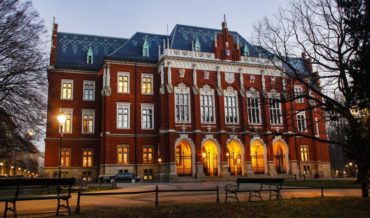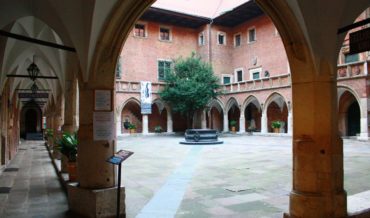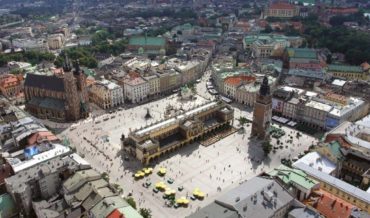Contents
Key Facts
- Born in Kraków in 1820, becoming one of the city's most influential 19th-century architects
- Studied at three prestigious institutions: Jagiellonian University, Technical Universities in Munich and Karlsruhe, and military engineering school in Metz
- Worked as a road and bridge conductor in Paris before returning to Kraków
- Led the conservation project of Collegium Maius, continuing the work of Karol Kremer
- Designed and built Collegium Novum, considered his masterpiece and a defining feature of Kraków's university quarter
- Represented the Neo-Gothic revival movement in Polish architecture during the Austrian partition period
- Died on June 18, 1883, in Kraków, leaving behind an enduring architectural legacy
Early Life and Education
Feliks Księżarski was an architect born in Kraków in 1820, during a period when the city was under Austrian rule as part of the Galicia region within what is now the Małopolska region. Growing up in this historic city, surrounded by medieval and Renaissance architecture, profoundly influenced his future passion for architectural preservation and design. The Austrian partition period, while politically challenging, created unique opportunities for cultural expression through architecture, as Polish architects sought to preserve their national identity through built heritage.
His educational journey began at the Faculty of Philosophy of the Jagiellonian University in 1835-1837, where he received a comprehensive foundation in humanities and critical thinking. This philosophical background would later inform his holistic approach to architecture, emphasizing not just technical proficiency but also cultural, historical, and aesthetic sensitivity.
Seeking to expand his technical knowledge, Księżarski continued his studies abroad at the Technical Universities in Munich and Karlsruhe. These German institutions were renowned for their advanced engineering programs and cutting-edge architectural theories. The experience exposed him to the latest developments in construction techniques, structural engineering, and the emerging Neo-Gothic revival movement that was gaining popularity across Central Europe. This international education was crucial in shaping his sophisticated understanding of both historical architectural principles and contemporary building innovations.
Military and Professional Training
To further diversify his expertise, Księżarski also graduated from the military artillery and engineering school in Metz, France. This military engineering background provided him with invaluable skills in:
- Structural analysis and fortification design
- Advanced project management and logistics coordination
- Precision in technical drawing and architectural planning
- Deep understanding of materials and their properties under structural stress
- Knowledge of large-scale construction organization
Following his graduation, he worked as a road and bridge conductor in Paris, gaining practical experience in large-scale infrastructure projects. This position allowed him to witness firsthand the urban transformation of Paris under Baron Haussmann's renovation project, exposing him to modern urban planning principles and construction methodologies that he would later adapt and apply in Kraków's unique historical context.
Return to Kraków and Professional Career
Settling in Kraków (1848)
Księżarski settled permanently in Kraków in 1848, a significant year in European history marked by revolutionary movements across the continent. His return coincided with a period of renewed interest in Polish cultural identity and heritage preservation, making his international expertise particularly valuable to the local architectural community and cultural institutions.
Conservation Work at Collegium Maius
Upon his return, Księżarski immediately engaged with one of Kraków's most important architectural heritage projects. He continued the work of Karol Kremer on the reconstruction and conservation of Collegium Maius. This medieval building, dating from the 14th century, required delicate restoration work that demanded both advanced technical expertise and profound understanding of historical construction methods.
The Collegium Maius project involved sophisticated challenges:
- Structural reinforcement of medieval walls and foundations using period-appropriate techniques
- Meticulous restoration of Gothic architectural elements including pointed arches, ribbed vaults, and stone tracery
- Careful integration of modern utilities while maintaining complete historical authenticity
- Comprehensive documentation and preservation of original architectural features and construction methods
- Sourcing of traditional materials including limestone from local Kraków quarries
Masterpiece: Collegium Novum
Design and Construction
His greatest work was the construction of the university building Collegium Novum, which became a defining element of Kraków's university quarter. This project represented the culmination of his architectural career and demonstrated his exceptional ability to create new structures that harmoniously complemented Kraków's historic urban fabric while meeting the functional demands of a modern academic institution.
The Collegium Novum, completed in the Neo-Gothic style, featured innovative design elements:
- Elaborate stone facades with intricate hand-carved details executed by local craftsmen
- Large Gothic revival windows providing abundant natural light optimized for academic activities
- Functionally designed interior spaces specifically planned for modern university needs including lecture halls with advanced acoustics
- Seamless integration with the existing university quarter layout and architectural context
- Advanced heating and ventilation systems incorporating the latest 19th-century building technology
- Local limestone construction utilizing materials from nearby quarries, ensuring harmony with existing Kraków architecture
Architectural Significance
The building became a defining element of the university quarter, establishing Księżarski's reputation as a master of the Neo-Gothic revival style. His design successfully balanced multiple complex requirements:
- Historical architectural vocabulary with contemporary functional requirements
- Aesthetic beauty and cultural symbolism with practical academic needs
- Local building traditions with international architectural trends
- Monumental institutional scale with human-proportioned architectural details
Visiting Collegium Novum today, one can still appreciate the enduring quality of Księżarski's design vision, as the building continues to serve as a vibrant academic hub more than 140 years after its completion.
Architectural Legacy and Impact
Influence on Kraków's Urban Development
Księżarski's work significantly influenced the architectural development of 19th-century Kraków and established principles that continued to guide the city's growth. His approach to combining historical preservation with sensitive new construction became a model for subsequent architects working in the city. His projects demonstrated how modern buildings could enhance rather than compete with historic architecture, a principle that remains relevant in contemporary urban planning. The Planty park surrounding the Old Town provided a perfect setting for his university buildings, creating a harmonious relationship between green spaces and academic architecture.
Contribution to Polish Architecture During Partition Period
During the period of partitions, when Poland did not exist as an independent state, architects like Księżarski played a crucial role in maintaining and developing Polish architectural identity. The Neo-Gothic revival, championed by architects like Księżarski, became a significant form of cultural expression and subtle resistance, allowing Polish heritage to be reinterpreted and preserved within the constraints of foreign rule. His work represented a sophisticated bridge between:
- Traditional Polish architectural heritage and European architectural movements
- Academic architectural theory and practical construction expertise
- Local building traditions and craftsmanship with international professional standards
- National cultural aspirations and the political realities of the partition period
Personal Life and Death
Księżarski remained dedicated to his architectural practice in Kraków throughout his distinguished career. His deep connection to the city and its architectural heritage shaped both his professional work and personal commitment to cultural preservation. He died on June 18, 1883, in Kraków, leaving behind a substantial architectural legacy that continues to define the city's academic quarter and inspire contemporary architects.
Recognition and Historical Importance
Today, Feliks Księżarski is recognized as one of the most important architects of 19th-century Kraków and a key figure in Polish architectural history. His contributions to the preservation of medieval architecture and his masterful new constructions helped shape the city's unique character that attracts millions of visitors annually to the historic center. The Collegium Novum remains one of the most photographed and admired buildings in Kraków's historic center, serving as both a functional academic facility and a testament to Księżarski's architectural vision and technical mastery.
His work demonstrates the successful integration of international architectural education with local cultural values, creating a distinctive Polish interpretation of the Neo-Gothic revival that influenced generations of architects in the region. Located not far from the famous Main Square and within view of the royal Wawel Castle, his buildings form an integral part of Kraków's architectural ensemble that tells the story of the city's development through the centuries.
References
- Polski Słownik Biograficzny, vol. XVI. Polska Akademia Nauk, 1971.
- Jagiellonian University Archives, Building and Construction Records, 19th Century Collection.
- Kozłowski, Stefan. Architektura Krakowa w XIX Wieku. Wydawnictwo Literackie, 1982.
- Mossakowski, Stanisław. Neogotyk w Architekturze Polskiej. Państwowe Wydawnictwo Naukowe, 1978.
- Roczniki Krakowskie, Historical Society of Kraków, various issues 1880-1885.
- National Museum in Kraków, Department of Applied Arts, Architectural Drawings Collection.


